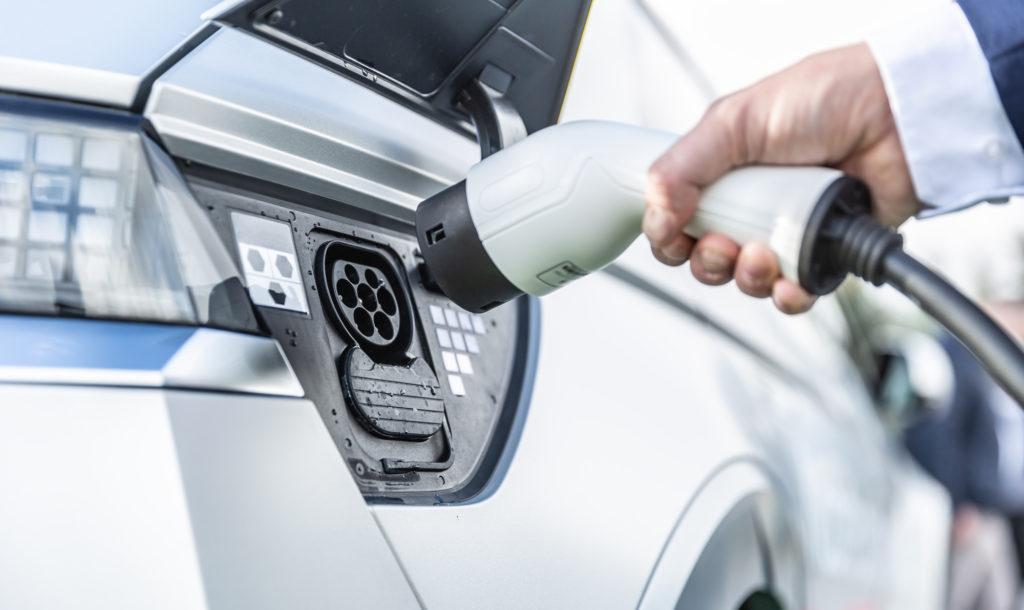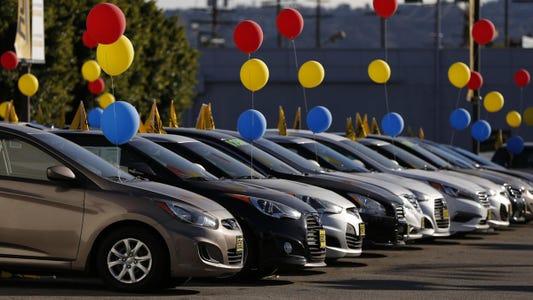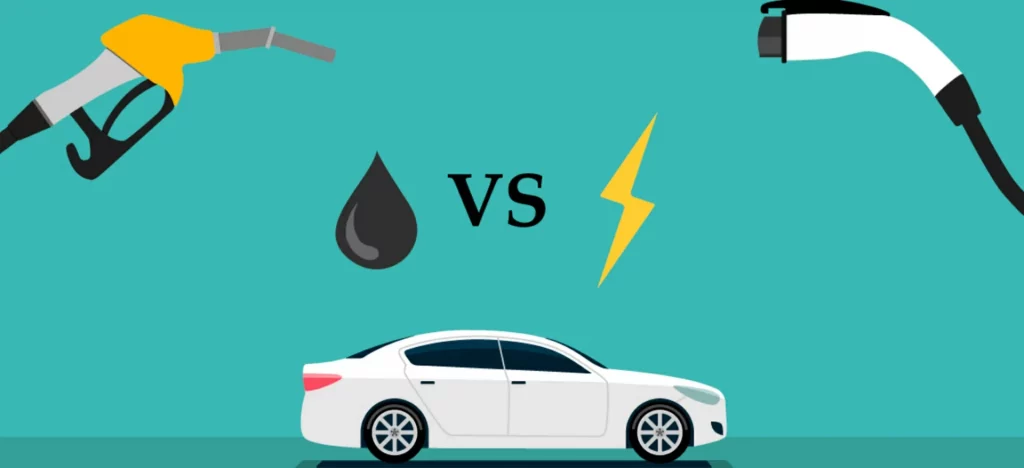Cost of Insurance: EVs vs Conventional Cars
By Sebastian Orellana
Updated Feb 17, 2024

In this article, we'll go beyond the bumper, under the hood, and into the nitty-gritty of car insurance. First, we'll discuss the necessity of car insurance and the critical elements of an auto insurance policy - whether you're insuring a gas guzzler or a green machine. We'll delve deeper into the world of electric vehicles, including their increasing popularity, and examine the ins and outs of insuring these eco-friendly options. The story doesn't end there, though. We'll also tackle conventional vehicles and their insurance requirements.
Table of Contents
Finally, brace yourself for a comparative analysis as we pit electric vehicles against their traditional counterparts in the context of insurance costs, factors causing variances, and potential future trends. Whether you're a clean-energy enthusiast or an old-school petrolhead, this article will help you decide about car insurance. Car insurance is a necessity for anyone who owns a vehicle.
Whether the car is used for personal or commercial purposes, ensuring it provides the policyholder with a sense of security, knowing their financial interests are protected in various scenarios. Owning a car presents with it numerous liabilities. Accidents can happen at any time and can cost considerably in terms of repair, medical bills, and in extreme cases, lawsuits. Auto insurance helps to cover these occurrences, taking the financial burden off the policyholder’s shoulders.
Understanding the basics of car insurance can often seem daunting, especially when looking at legal terminology, various coverage options, policy exceptions, etc. However, understanding these basics is vital to ensure you get the best out of your policy.
READ: The Cost of Converting a Gasoline Engine to Electric
Need for Car Insurance

The need for car insurance is derived from legal obligations and financial protection. In most jurisdictions, it’s a legal requirement to have minimum auto insurance coverage. This is usually a liability cover, protecting other drivers on the road from any damage caused by the policyholder. Failure to meet this requirement could result in severe penalties, including fines and license revocation.
The financial protection offered by a car insurance policy cannot be overstated. Aside from covering other drivers, a good policy should protect the policyholder too. This includes damage to the vehicle, personal injury, and other unforeseen instances. The cost of these scenarios can rapidly escalate beyond affordable means. Car insurance helps mitigate this risk, paying out for these damages per the policy agreement.
Fundamentals of Car Insurance Policy
The fundamentals of an auto insurance policy typically revolve around the coverages offered, terms of the policy, deductibles, and policy limits.
Coverage generally refers to what the policy pays for. This ranges from liability to personal injury, collision, and comprehensive. Liability coverage is usually the minimum required by law and pays for damage caused to other vehicles by the insured car. On the other hand, personal injury coverage covers medical expenses for the policyholder and passengers in the insured vehicle following an accident. Collision coverage carter for the repair of the insured car after an accident. In contrast, comprehensive coverage protects against other forms of damage to the vehicle, such as theft, vandalism, fire, etc.
Policy terms are the duration of the policy, usually six months to a year. It’s important to note that auto insurance policies don’t automatically renew and must be retained at the end of every term.
Deductibles are the out-of-pocket costs policyholders must meet before the insurance kicks in. The higher the deductible, the lower the premium. On the other hand, policy limits are the maximum amounts an insurance company will pay out under a claim.
Factors Influencing Car Insurance Premiums
Understanding the factors influencing car insurance premiums can help policyholders minimize their policy costs. These factors include driver’s age, driving records, type of vehicle, and location, among others.
The driver's age influences the auto insurance premium as younger, inexperienced drivers often get higher quotes than older drivers. Similarly, someone with a clean driving record is also likely to attract lower rates than a driver with several traffic violations.
The type of vehicle matters too. High-performance sports cars typically attract higher premiums than a standard sedan due to the potential repair costs.
Lastly, location can also influence car insurance premiums. Dense urban areas with a high car theft or vandalism rate usually result in higher premiums than quieter, low-crime-rate suburban areas. Electric vehicles (EVs) have revolutionized the auto sector in numerous ways. Firstly, these vehicles utilize an electric motor powered by rechargeable battery packs instead of conventional petrol or diesel engines. This makes them environmentally friendly and significantly reduces the cost per mile driven when contrasted with traditional fuel vehicles.
Understanding Electric Vehicles
Electric cars share certain constituent components with conventional petrol or diesel cars. For instance, both need some drive train that enables them to move, and both need an energy source to power that drive train. However, the key difference between these two is their energy source: while traditional cars rely on internal combustion engines, EVs use large traction battery packs to power their electric motors.
The working principle of an EV starts with plugging the vehicle into an electric charging station. As the vehicle charges, its batteries store the electrical energy. When activated, the vehicle converts the energy stored in the batteries into mechanical power using the electric motor, enabling the wheels to move.
Growth and Popularity of EVs
The growth and popularity of electric vehicles have been nothing short of remarkable. The modern emphasis on sustainable living and increased environmental awareness has contributed to the surge in the popularity of EVs. People are increasingly aware of the harmful emissions of conventional vehicles and are looking for green alternatives.
Furthermore, EVs also provide financial benefits. The cost of charging electric vehicles is much lower than petrol or diesel, making EVs less expensive in the long term. Many countries are also offering financial incentives to promote the purchase of EVs and to discourage the use of traditional fuel cars. For instance, certain countries have introduced electric vehicle subsidies, making them affordable to the average customer.
Key Brands and Models in EV Market
Several car manufacturers are now producing electric vehicles, with some long-established brands shifting their focus to electric cars. Topping the list is Tesla Inc., which has consistently been at the forefront of the electric car revolution. The brand’s popular models, including the Tesla Model S, Model 3, and Model X, are renowned for their high range and excellent performance.
Next in line are the Nissan Leaf and Chevrolet Volt, which have become household names thanks to their affordability and reliability. Companies such as BMW, Mercedes-Benz, Audi, and Volkswagen are also not left behind, each having manufactured remarkable electric models that combine luxury with a zero-emission drive.
Ford, an automaker known for its powerful pickup trucks, is also gradually delving into the EV sector, launching the Mustang Mach-E and the fully electric Ford F-150 Lightning. Meanwhile, startups like Rivian and Lucid Motors are not playing catch-up either. They have impressively positioned themselves in the EV market with high-end, luxurious electric SUVs and sedans.
All in all, electric vehicles are here to stay. Their benefits to both the environment and the consumer are significant, with advancements in technology expected to ensure a continued rise in their popularity.
READ: How Much Does It Cost to Convert an Old Car to EV?
Cost of Insurance for Electric Vehicles

Choosing to drive an electric vehicle (EV) doesn't just affect your carbon footprint; it could also affect your wallet. The insurance cost is often higher for electric vehicles than their gas counterparts. So, why does this disparity exist? And is there any way to lower these costs?
In this section, we will delve into the nuances of EV insurance policies. We will examine why they cost what they do and what factors influence prices. Furthermore, we will discuss the different coverages available for electric vehicles.
Understanding EV Insurance Policies
Firstly, it's essential to understand that insurance is a way to protect against financial loss. Just like traditional gas-powered vehicles, electric vehicles need insurance, too. However, EV insurance policies often differ from standard car insurance policies. This is primarily because electric vehicles use different technology and are expensive to repair or replace in case of an accident. Therefore, insurers view EVs as higher risk, resulting in higher premiums.
Moreover, EV insurance typically comes with options for add-on coverage like battery and charging equipment coverage that aren’t applicable for gas-powered vehicles. Therefore, before you shop for an EV insurance policy, it’s worth taking the time to understand the different coverages and what they entail.
Factors Influencing EV Insurance Premiums
While factors like the driver's age, location, and driving record play a significant role in determining insurance premiums for both EVs and traditional vehicles, there are also a few EV-specific factors.
Liability Coverage
Liability insurance protects you if you are found at fault in an accident. It covers the cost of the other driver's medical bills and property damage. If you have a more expensive car, the cost to repair or replace another person's vehicle could be higher, so you may want more liability coverage. This can drive up the cost of insuring an electric vehicle.
Collision Coverage
Electric vehicles can be more expensive to insure due to the cost of repairing or replacing them in the event of a collision. Given that EVs are generally pricier than traditional vehicles, the insurance payouts in case of damage can be hefty. As a result, its insurance costs can be higher.
Comprehensive Coverage
Comprehensive coverage pays for damages caused by events other than collisions, like theft, vandalism, fire, or natural disasters. If your EV has unique features that would cost more to replace or repair, you could pay more for comprehensive coverage to protect these areas.
Comparison of EV Insurance Rates
Although the cost of insuring an EV is generally higher, it's not universally so. The rates vary greatly from one insurance provider to another and from one model to another.
Some EVs are less costly to insure than others base on factors such as the cost of parts, the model's loss history, and safety ratings. Always compare different providers and study their offerings before making a decision. It can be advantageous to consult with an insurance agent who has experience with EVs.
Finally, while the cost of insurance may be higher for EVs, it's essential to consider this cost in the context of overall vehicle ownership. You might pay more for insurance, but you could offset this cost by the significant savings on fuel and maintenance that EVs offer. Conventional vehicles, as the name implies, are the traditional types of automobiles that rely solely on a gasoline or diesel internal combustion engine for propulsion. These vehicles have dominated the automotive industry for over a century and have shaped modern transportation.
Unlike their electric counterparts, conventional cars are powered by internal combustion engines, which generate power by burning gasoline or diesel. The engine's pistons move up and down within the cylinders, creating the power to drive the wheels. Despite improvements in efficiency and reductions in emissions, conventional vehicles continue to contribute significantly to global greenhouse gas emissions.
However, it is vital to note that conventional vehicles aren't just about the engine. They encompass a comprehensive system that comprises various mechanical and electrical components. This ranges from the drivetrain to the vehicle's heating and cooling systems and complex electronics that control everything from the stability of the car to the operation of the airbags.
The broad spectrum of conventional vehicles available on the market is also worth mentioning, from compact sedans to rugged SUVs and lavish luxury vehicles. In every segment, these vehicles offer diverse capabilities, comfort levels, and price tags.
Understanding Conventional Vehicles
To appreciate conventional vehicles' impact on our society, it's essential to understand their mechanistic underpinnings. The heart of any traditional vehicle is its internal combustion engine. This complex machinery relies on an intricate dance of moving parts, heat, and pressure to convert fuel into the raw power that turns the vehicle's wheels.
The components involved include, but are not limited to, the cylinder block and head, pistons, connecting rods, crankshaft, camshaft, valves, spark plugs, oil filters, and more. All these parts work together to sustain the continuous cycle of intake, compression, combustion, and exhaust that is the basis of an internal combustion engine's operation.
Though many advancements have resulted in internal combustion engine vehicles that are safer, more efficient, and more environment-friendly, they continue to be a significant source of air pollution. A conventional car emits carbon dioxide, a greenhouse gas contributing significantly to climate change. It also lets out other pollutants, such as particulate matter, nitrogen oxides, and volatile organic compounds, posing health hazards.
Key Brands and Models in the Conventional Car Market
Despite the rising popularity of electric vehicles, conventional cars still dominate the marketplace due to engine performance, range, and refueling convenience. Numerous makes and models cater to buyers' individual preferences, with brands like Toyota, Ford, General Motors, BMW, Mercedes-Benz, and Honda leading the pack.
Toyota boasts top-selling models like the Corolla and Camry, while Ford is renowned for its Ford F-Series pickup trucks and the iconic Mustang. General Motors, with its range of brands including Chevrolet, GMC, Buick, and Cadillac, offers everything from compact cars to full-size SUVs. BMW, Mercedes-Benz, and Audi have a firm grip on the luxury vehicle market with their range of sedans, coupes, and SUVs.
Each brand offers several conventional vehicle models; each touted for its unique features, design, and performance capabilities. The diversity in the traditional car market ensures something for everyone, whether it's a fuel-efficient compact car for city driving, a comfortable family SUV for long drives, or a powerful sports car for the speed enthusiast. These vehicles hold a significant share of the global auto market and are integral to the automotive heritage and future.
Cost of Insurance for Conventional Vehicles

Insurance is critical to owning a car since it provides financial protection in cases of accidents or other unfortunate circumstances. Whether you own a traditional car, insurance costs are an essential economic factor. This section provides a comprehensive guide on the insurance cost for conventional vehicles, typically petrol, diesel, or gasoline-powered cars.
Understanding Conventional Car Insurance Policies
Car insurance can be undeniably confusing with its myriad of policies and types. An elementary understanding of conventional car insurance policies is crucial for vehicle owners. These policies generally include liability coverage, comprehensive coverage, collision coverage, personal injury protection, and uninsured/underinsured motorist protection.
Additionally, car insurance policies from different companies may offer additional benefits or coverage options, making it necessary for car owners to research and understand the specifics of each policy.
Factors Influencing Conventional Car Insurance Premiums
Regarding insurance pricing, several factors can influence the premium tagged to conventional car insurance. Age, driving experience, type and age of the vehicle, location, claim history, and driving records are among the numerous factors that affect insurance rates.
For example, a 20-year-old with a sports car may be considered a higher risk than a 45-year-old with a minivan, hence higher premium rates. It's essential to understand these factors when evaluating the cost of conventional car insurance, as it enables you to get more accurate estimates and potentially lower your rates.
Liability Coverage
Liability coverage is a fundamental part of any car insurance policy. This coverage pays for expenses incurred if you're responsible for an accident- these expenses can include medical bills, damage to property, and legal expenses if you're sued. However, rates can vary extensively from one provider to another. As a result, shopping around for the best rates and understanding your needs can ultimately save you hundreds of dollars each year.
Collision Coverage
As the name suggests, collision coverage pays for damages to your car if you collide with an object, including another car. The cost for such coverage largely depends on your vehicle's make and model, the driver's age and experience, and the geographical location. Like liability coverage, rate comparisons could lead to substantial savings.
Comprehensive Coverage
Comprehensive coverage covers non-collision damages. These can include fire, theft, vandalism, or natural disasters. It is typically more expensive than basic coverage options due to the broad range of potential threats it covers. Yet, you may pay a higher deductible to lower the premium costs. In any case, comprehending the specific details of what is and isn’t covered will allow you to make an informed decision when opting for comprehensive coverage.
Comparison of Conventional Car Insurance Rates
The cost of insuring a conventional car depends immensely on the variables discussed above, resulting in a wide-ranging difference in rates between providers and policies. Car owners need to make comprehensive comparisons to identify the most affordable and suitable insurance plan. This comparison involves getting quotes from insurance companies, reading reviews, and consulting with experts.
Remember, the cheapest insurance might not necessarily be the best, so looking at the coverage and the services the insurance company provides is equally important. This element of thoroughness is essential in finding the best-priced insurance for conventional vehicles.
Comparative Study: Insurance Costs of EVs vs Conventional Cars

This comparative study delves into the differential insurance costs between Electric Vehicles (EVs) and Conventional gasoline-powered cars. To conduct this survey, we gathered insurance cost data on various EV models and compared them with their conventional counterparts. Insurance costs for cars are dependent on a multitude of factors.
To make the comparison as fair as possible, we matched these factors. For instance, if we were comparing the insurance costs of the Tesla Model 3 with a gasoline-powered vehicle, we made sure to choose a gasoline-powered car in the same class with similar safety features and similar cost price.
The study revealed that, on average, insurance for Electric Vehicles tends to be more expensive than for their gasoline-powered counterparts. However, the difference was not as significant as some may predict. So the question arises – why are electric vehicles more expensive to insure? And are the factors causing this difference likely to change over time?
Initial Results and Observations
The immediate observations from our study indicate that, in general, the insurance costs for electric vehicles exceed those for traditional internal combustion engines. There were, however, instances where the insurance costs were almost similar. And in certain cases, particularly with luxury EVs, their insurance costs were considerably lower when compared to luxury gasoline-powered cars.
These results give us many insights about the current state of auto insurance rates. They showcase how the risks and costs associated with electric vehicles, which are different than those of traditional cars, can impact the insurance premium a customer needs to pay.
Factors Causing Variance in Insurance Costs
Several factors contribute to the variance in insurance costs between EVs and conventional cars. The primary underlying reason is that EVs are generally more expensive than conventional cars, resulting in higher repair and replacement costs. This impacts the cost of claims that insurers might pay, resulting in higher premiums for EV owners.
Other essential factors include that electric vehicles, on average, are safer than their conventional counterparts. Electric cars tend to have better handling and stability, thanks to their heavy batteries at the bottom. However, while this may decrease the risk of accidents, any damage incurred is likely more expensive to repair due to the high cost of EV parts and specialized mechanic labor.
READ: What is Needed to Convert a Car to Electric?
Potential Impact of Future Trends on Insurance Costs
Like any other industry, the insurance industry is susceptible to technological advancements and market trends. Suppose electric vehicles continue to grow in popularity and start becoming mainstream. In that case, we might see reductions in the cost of their parts and servicing, potentially reducing their insurance costs.
A paradigm shift regarding battery technology could also significantly impact insurance costs. If a more cost-efficient and durable battery technology becomes available, the costs associated with replacing or repairing batteries will reduce, thus lowering the insurance premium for electric vehicles.
Furthermore, improvements in driver assistance technologies and progress towards autonomous vehicles, which are more prevalent in electric cars, could also substantially reduce accident rates, potentially leading to lower insurance costs.
To sum up, although the insurance cost for Electric Vehicles is currently higher than for gasoline-powered cars, the gap is not substantial, and it may narrow down even further with the advent of new technologies and market trends.
